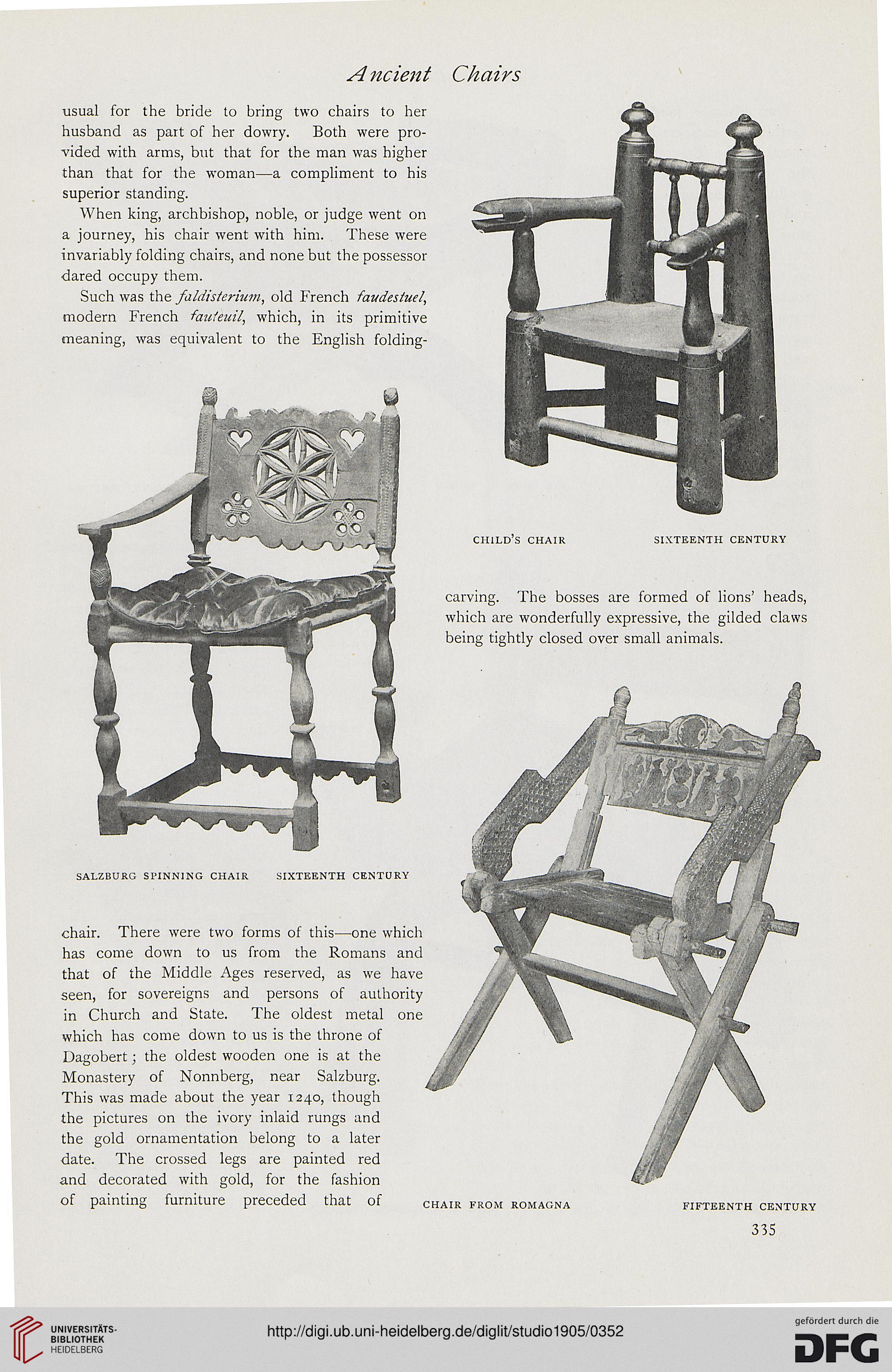A ncient Chairs
usual for the bride to bring two chairs to her
husband as part of her dowry. Both were pro-
vided with arms, but that for the man was higher
than that for the woman—a compliment to his
superior standing.
When king, archbishop, noble, or judge went on
a journey, his chair went with him. These were
invariably folding chairs, and none but the possessor
■dared occupy them.
Such was the faldisterium, old French favdestuel,
modern French faufeuil, which, in its primitive
meaning, was equivalent to the English folding-
cii1lds chair sixteenth century
carving. The bosses are formed of lions' heads,
which are wonderfully expressive, the gilded claws
being tightly closed over small animals.
salzburg spinning chair sixteenth century
chair. There were two forms of this—one which
has come down to us from the Romans and
that of the Middle Ages reserved, as we have
seen, for sovereigns and persons of authority
in Church and State. The oldest metal one
which has come down to us is the throne of
Dagobert; the oldest wooden one is at the
Monastery of Nonnberg, near Salzburg.
This was made about the year 1240, though
the pictures on the ivory inlaid rungs and
the gold ornamentation belong to a later
date. The crossed legs are painted red
and decorated with gold, for the fashion
of painting furniture preceded that of chair from romagna fifteenth century
335
usual for the bride to bring two chairs to her
husband as part of her dowry. Both were pro-
vided with arms, but that for the man was higher
than that for the woman—a compliment to his
superior standing.
When king, archbishop, noble, or judge went on
a journey, his chair went with him. These were
invariably folding chairs, and none but the possessor
■dared occupy them.
Such was the faldisterium, old French favdestuel,
modern French faufeuil, which, in its primitive
meaning, was equivalent to the English folding-
cii1lds chair sixteenth century
carving. The bosses are formed of lions' heads,
which are wonderfully expressive, the gilded claws
being tightly closed over small animals.
salzburg spinning chair sixteenth century
chair. There were two forms of this—one which
has come down to us from the Romans and
that of the Middle Ages reserved, as we have
seen, for sovereigns and persons of authority
in Church and State. The oldest metal one
which has come down to us is the throne of
Dagobert; the oldest wooden one is at the
Monastery of Nonnberg, near Salzburg.
This was made about the year 1240, though
the pictures on the ivory inlaid rungs and
the gold ornamentation belong to a later
date. The crossed legs are painted red
and decorated with gold, for the fashion
of painting furniture preceded that of chair from romagna fifteenth century
335




